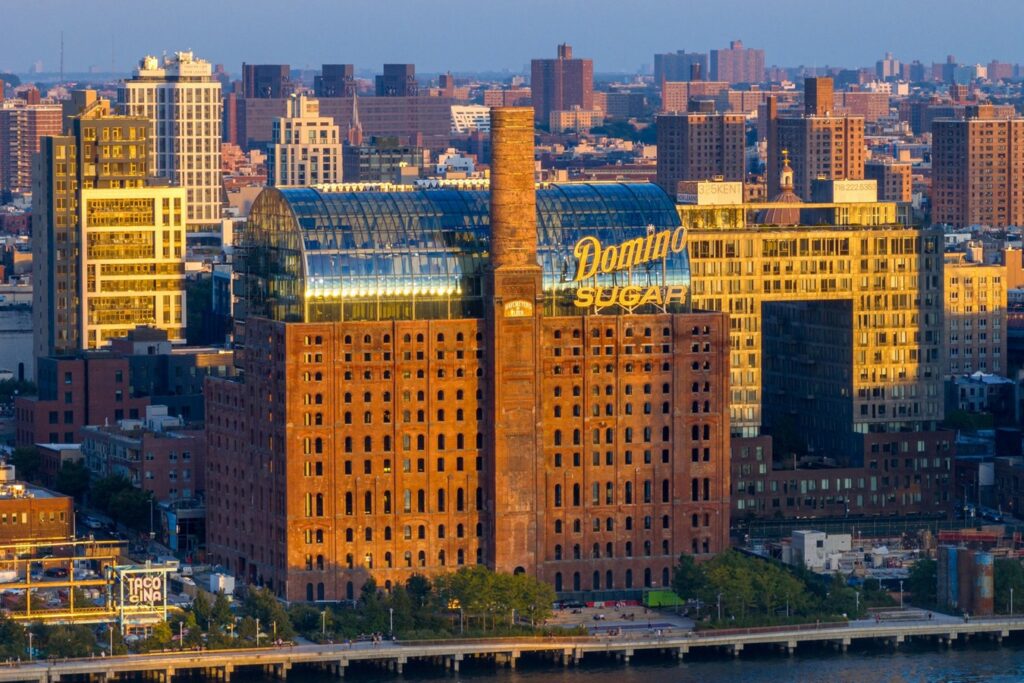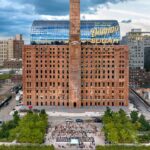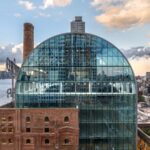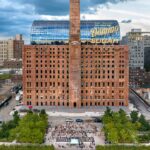Revitalizing the Domino Sugar Refinery: A New Working Waterfront in Brooklyn
The Domino Sugar Refinery in Brooklyn, United States, stands as an industrial urban landmark with a rich history. Constructed by Henry Havemeyer, this iconic building has played a significant role in both Brooklyn’s skyline and economy. In 2017, PAU – Practice for Architecture and Urbanism commenced the design for its adaptive reuse, envisioning it as the centerpiece of a vibrant mixed-use neighborhood.

Architectural Heritage
The Refinery was originally designed to house the filtering, panning, and finishing of sugar, featuring enormous equipment within cavernous, multistory spaces. Its distinctive appearance, characterized by repetitive punched arch windows and a muscular smokestack, contributed to its monumental presence in the Brooklyn landscape.
Adaptive Reuse Design
PAU embarked on a unique approach to preserve the building’s heritage while accommodating modern needs. Rather than altering the original structure, they opted to nest a new building within the existing envelope, creating a 10- to 12-foot gap between the old and the new. This innovative strategy allowed for standardized floor heights, optimizing office space for new tenants.

Contemporary Workspace
The refurbished Refinery now offers state-of-the-art office space spanning 425,000 square feet, designed to meet the needs of a modern workforce. Historic windows provide panoramic views of Manhattan, while the light and airy perimeter enhance natural light penetration into the core, creating a unique and inviting environment.
Architectural Features
A new glass barrel vault, inspired by the American Round Arch Style, rises above the historic structure, paying homage to its original form. The ground floor windows have been transformed into doors, creating a seamless connection from Kent Avenue into a public foyer leading to Domino Park, fostering pedestrian engagement and community interaction.

Community Impact
The revitalization of the Domino Sugar Refinery serves as a catalyst for the transformation of Brooklyn’s waterfront into a dynamic mixed-use neighborhood. With a blend of creative office space, housing, retail, and community facilities, the Refinery celebrates its industrial past while embracing its future as a vibrant hub for innovation and community life.
Conclusion
The adaptive reuse of the Domino Sugar Refinery represents a harmonious blend of architectural heritage and contemporary design, breathing new life into a historic icon. PAU’s innovative approach preserves the building’s character while creating a modern workspace that integrates seamlessly with its surroundings, contributing to the revitalization of Brooklyn’s waterfront and the ongoing evolution of the cityscape.














